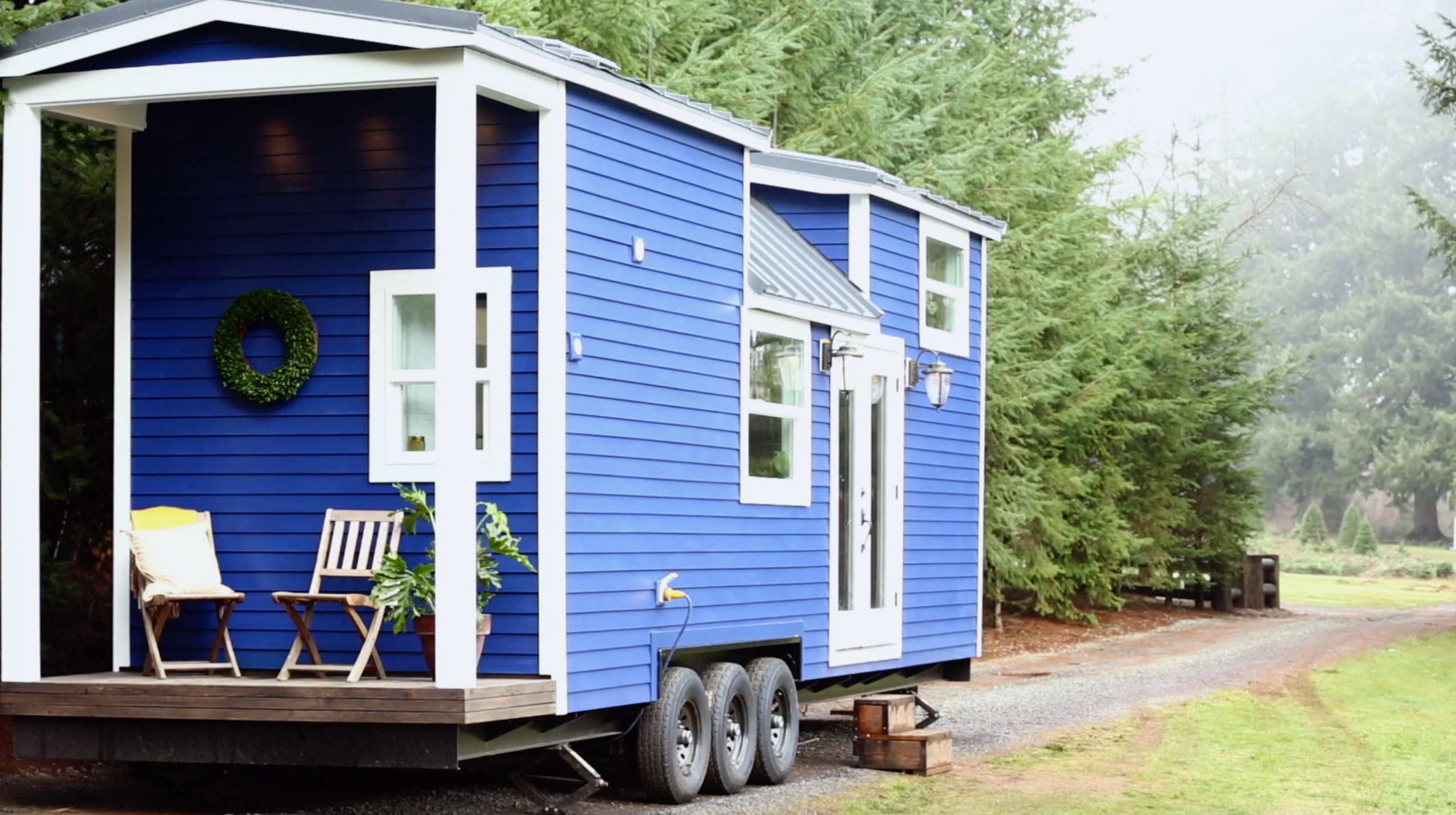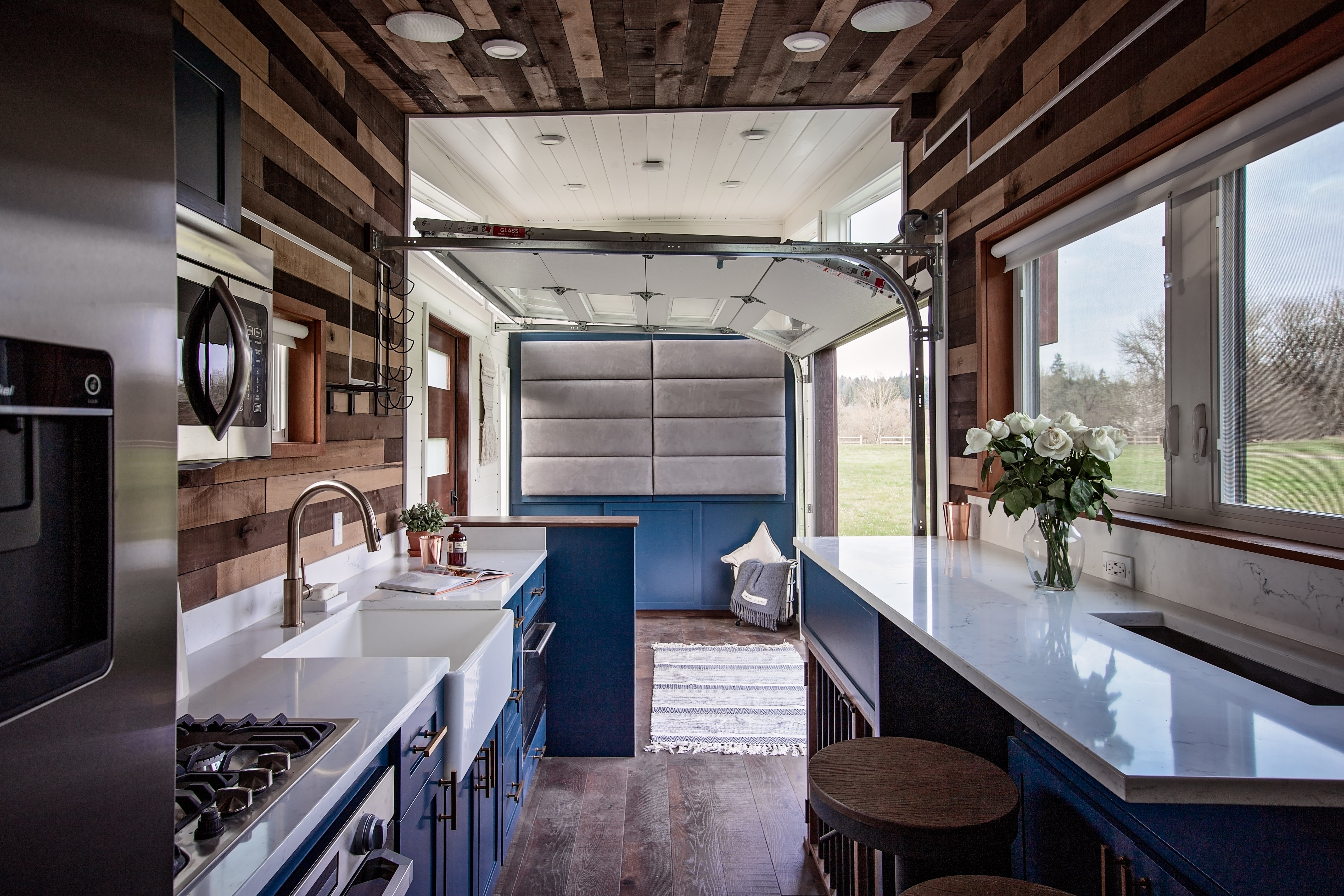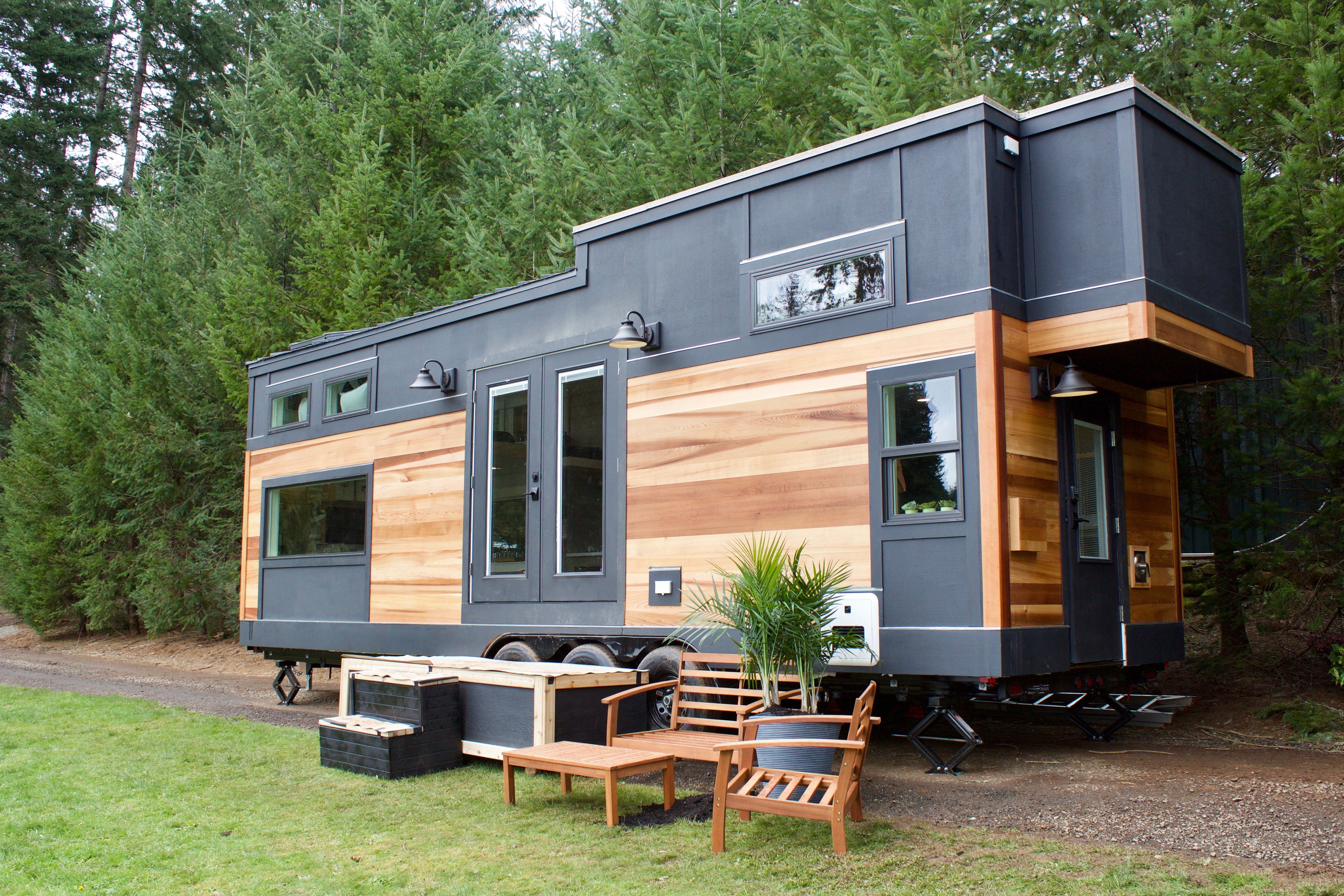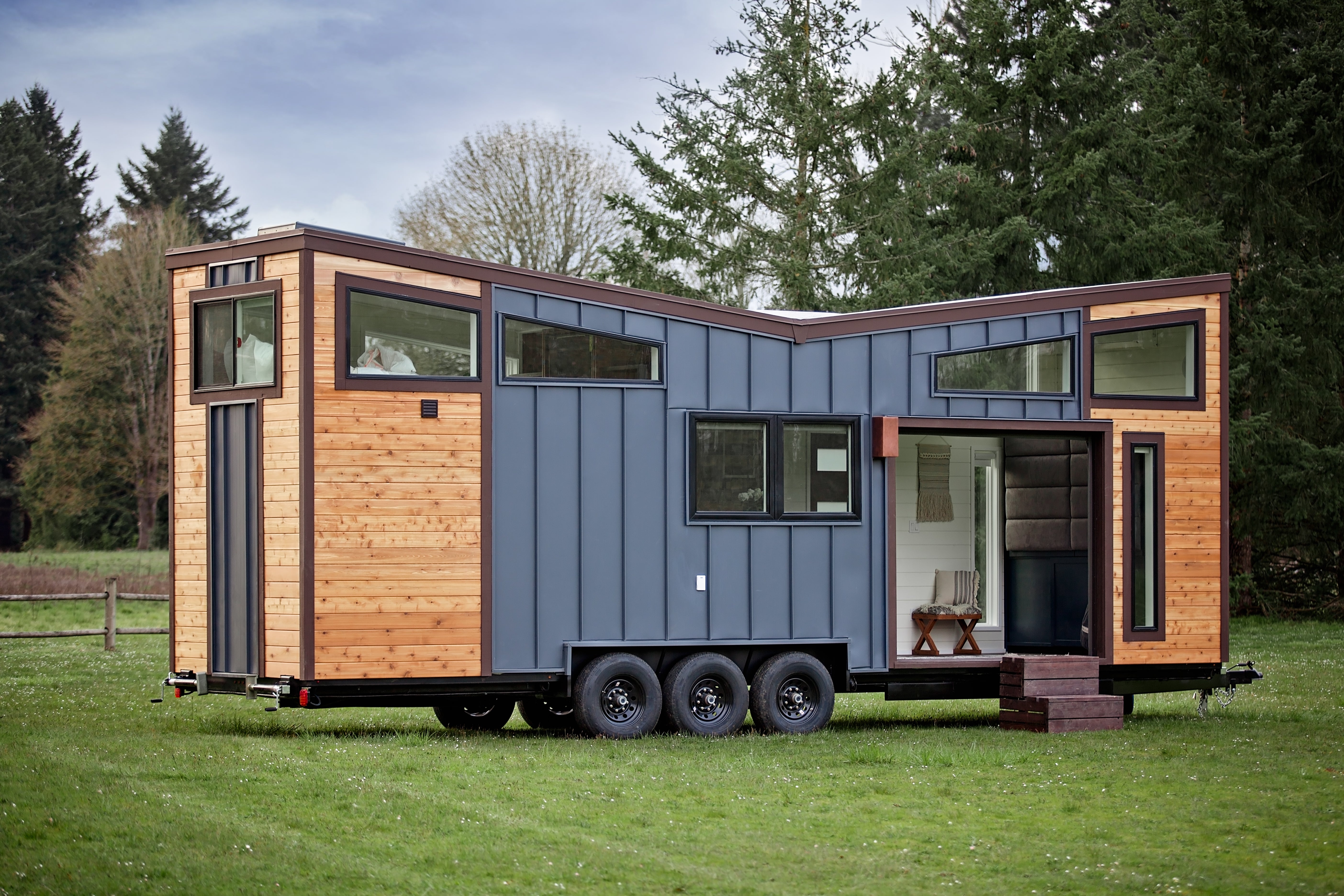Before you build a tiny home, it’s vital to understand your area's zoning laws, permitting process, and building codes. These regulations can dictate where you can place your tiny home, as well as what permits you need to secure.
Pay attention to minimum lot sizes, setbacks, and safety standards to avoid fines or legal issues. Compliance with local guidelines is essential for a successful build. There's more to explore about utilities and HOA restrictions that can affect your project.
Key Takeaways
-
Check local zoning laws to understand where tiny homes can be built and any specific requirements for lot sizes and building heights.
-
Navigate the permitting process by preparing necessary documentation and adhering to application deadlines and fees for building permits.
-
Ensure compliance with building codes to guarantee safety, structural integrity, and adherence to standards for materials, electrical, and plumbing systems.
-
Verify placement regulations, including setbacks and foundation types, to avoid fines or eviction from designated zones for tiny homes.
-
Review HOA restrictions, as they may impose specific guidelines that affect the design, size, or even the legality of tiny homes.
Understanding Zoning Laws
When you’re considering a tiny home, understanding zoning laws is essential, as these regulations dictate where and how you can build or place your dwelling. Zoning laws vary considerably by location, affecting everything from minimum lot sizes to building heights. You’ll need to check local ordinances to determine if tiny homes are permitted in your desired area.
Some jurisdictions classify tiny homes as accessory dwelling units (ADUs), while others may not recognize them at all. Pay attention to setbacks, occupancy limits, and specific land use categories, as these can impact your ability to reside in a tiny home. Familiarizing yourself with these regulations guarantees compliance and helps you avoid potential legal issues down the road. Always consult local zoning authorities for the most accurate information.
Check out the rules and regulations in:
Permitting Process for Tiny Homes
Maneuvering the permitting process for tiny homes can be complex, especially since requirements differ considerably by jurisdiction. First, research your local regulations to determine if you need a building permit, zoning approval, or both. Prepare your application by gathering necessary documentation, including site plans, utility plans, and any required environmental assessments.

Submit your application, paying attention to any fees and deadlines. Be prepared for potential inspections and follow-up requests from the permitting office. It’s vital to communicate promptly with officials to address any concerns they might raise. Finally, keep copies of all submitted documents and correspondence, as this will help streamline the process and guarantee compliance. Understanding these steps can save you time and frustration in the long run.
Building Codes and Safety Standards
Building codes and safety standards are vital components in the development of tiny homes, as they guarantee structural integrity and occupant safety.
When you're planning your tiny home, you'll need to familiarize yourself with local regulations that dictate minimum requirements for materials, electrical systems, plumbing, and insulation. These codes often reference national standards, such as the International Residential Code (IRC), which set forth guidelines to guarantee safety and durability.
You should also consider fire safety standards, including proper egress, fire-resistant materials, and smoke detectors. Compliance with these regulations not only guarantees safety but can also simplify the permitting process. Remember, adhering to building codes is essential for avoiding fines and guaranteeing your tiny home stands the test of time.
Tiny Home Placement Regulations
Understanding local zoning laws and placement regulations is just as important as complying with building codes. When planning your tiny home, you'll need to verify specific placement requirements dictated by your municipality. These regulations often dictate minimum setbacks from property lines, allowable lot sizes, and even the types of foundations permitted.
Some areas may restrict tiny homes to designated zones, while others may require specific permits for placement. It's essential to check whether your tiny home can be parked on private land or if you must seek permission from a mobile home park. Additionally, confirm whether your home qualifies as an accessory dwelling unit (ADU) under local regulations. Compliance with these guidelines guarantees you avoid potential fines or eviction.
RV vs. Permanent Tiny Homes
When choosing between an RV and a permanent tiny home, you'll find that the key differences lie in their definitions, mobility, and regulatory requirements. RVs are designed for travel and typically classified as vehicles, which allows for greater mobility but may limit where you can legally park or stay.
In contrast, permanent tiny homes are often treated like traditional residences, requiring adherence to local building codes and zoning laws. This can influence design, construction materials, and safety standards. Additionally, RVs often have fewer amenities and are subject to different insurance regulations than permanent tiny homes. Understanding these distinctions will help you make an informed choice that aligns with your lifestyle and legal considerations.

Utilities and Infrastructure Considerations
Choosing between an RV and a permanent tiny home also affects your access to utilities and infrastructure. If you opt for an RV, you’ll likely rely on portable systems for water and electricity, which may limit your options for long-term living. Conversely, a permanent tiny home can connect to municipal services like water, sewage, and electricity, providing more stability and reliability.
You'll need to take into account local zoning laws and permits that govern utility connections. Additionally, think about the availability of internet service and waste disposal options. Research the infrastructure in your chosen area to guarantee it meets your needs. Ultimately, understanding these factors will help you make an informed decision about your tiny living situation.
Environmental Impact Assessments
Before committing to a tiny home, it’s essential to conduct an Environmental Impact Assessment (EIA) to evaluate how your living situation may affect the surrounding ecosystem. An EIA helps identify potential environmental risks associated with your construction and habitation, such as habitat disruption, water resource depletion, and waste management issues.
You'll need to assess the land’s ecological characteristics, including flora, fauna, and soil quality. Engaging with local environmental agencies can provide valuable insights and guidelines to guarantee compliance with regulations.
In addition, consider sustainable building materials and energy-efficient designs to minimize your ecological footprint. By conducting a thorough EIA, you’ll not only protect the environment but also enhance the sustainability of your tiny home project, fostering a responsible approach to living.
Homeowners Association (HOA) Restrictions
Although tiny homes promote minimalist living, they often face significant restrictions from Homeowners Associations (HOAs). Many HOAs impose strict architectural guidelines, limiting the size, design, and even the materials used in construction. You'll likely encounter rules regarding setbacks, height restrictions, and aesthetic conformity that your tiny home must adhere to. Additionally, some HOAs prohibit tiny homes altogether, classifying them as non-traditional structures.
Before you commit to a plot, it’s essential to review the HOA’s covenants, conditions, and restrictions (CC&Rs). Failing to comply can lead to fines, forced removal, or other penalties. Always engage with the HOA early in your planning process to guarantee your tiny home aligns with their regulations and avoid costly setbacks.

Resources for Tiny Home Builders
When initiating the journey of building a tiny home, leveraging available resources can greatly streamline the process. Start by consulting local building codes and zoning regulations to guarantee compliance. Websites like the American Tiny House Association offer valuable insights and connections.
You can also access online forums and social media groups where experienced builders share tips and resources. For technical guidance, consider purchasing books or attending workshops focused on tiny home construction. Utilize design software to visualize your plans accurately and connect with local builders who specialize in tiny homes for expert advice. Finally, explore financing options tailored for tiny home projects, as this can notably impact your budget and planning.
Conclusion
Before you commence on building your tiny home, it's essential to navigate the intricate landscape of regulations. Understanding zoning laws, the permitting process, and building codes will save you time and potential setbacks.
Consider placement regulations and whether your tiny home qualifies as an RV or a permanent structure. Don't overlook utility needs and possible HOA restrictions. By staying informed and compliant, you can guarantee your tiny home is both a sanctuary and a legal residence.






Share: